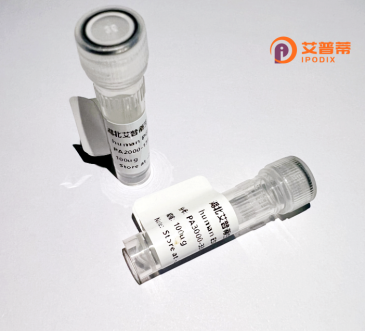
| 纯度 | >90%SDS-PAGE. |
| 种属 | Human |
| 靶点 | ARHGAP6 |
| Uniprot No | O43182 |
| 内毒素 | < 0.01EU/μg |
| 表达宿主 | E.coli |
| 表达区间 | 1-974aa |
| 氨基酸序列 | MSAQSLLHSVFSCSSPASSSAASAKGFSKRKLRQTRSLDPALIGGCGSDEAGAEGSARGATAGRLYSPSLPAESLGPRLASSSRGPPPRATRLPPPGPLCSSFSTPSTPQEKSPSGSFHFDYEVPLGRGGLKKSMAWDLPSVLAGPASSRSASSILCSSGGGPNGIFASPRRWLQQRKFQSPPDSRGHPYVVWKSEGDFTWNSMSGRSVRLRSVPIQSLSELERARLQEVAFYQLQQDCDLSCQITIPKDGQKRKKSLRKKLDSLGKEKNKDKEFIPQAFGMPLSQVIANDRAYKLKQDLQRDEQKDASDFVASLLPFGNKRQNKELSSSNSSLSSTSETPNESTSPNTPEPAPRARRRGAMSVDSITDLDDNQSRLLEALQLSLPAEAQSKKEKARDKKLSLNPIYRQVPRLVDSCCQHLEKHGLQTVGIFRVGSSKKRVRQLREEFDRGIDVSLEEEHSVHDVAALLKEFLRDMPDPLLTRELYTAFINTLLLEPEEQLGTLQLLIYLLPPCNCDTLHRLLQFLSIVARHADDNISKDGQEVTGNKMTSLNLATIFGPNLLHKQKSSDKEFSVQSSARAEESTAIIAVVQKMIENYEALFMVPPDLQNEVLISLLETDPDVVDYLLRRKASQSSSPDMLQSEVSFSVGGRHSSTDSNKASSGDISPYDNNSPVLSERSLLAMQEDAAPGGSEKLYRVPGQFMLVGHLSSSKSRESSPGPRLGKDLSEEPFDIWGTWHSTLKSGSKDPGMTGSSGDIFESSSLRAGPCSLSQGNLSPNWPRWQGSPAELDSDTQGARRTQAAAPATEGRAHPAVSRACSTPHVQVAGKAERPTARSEQYLTLSGAHDLSESELDVAGLQSRATPQCQRPHGSGRDDKRPPPPYPGPGKPAAAAAWIQGPPEGVETPTDQGGQAAEREQQVTQKKLSSANSLPAGEQDSPRLGDAGWLDWQRERWQIWELLSTDNPDALPETLV |
| 分子量 | 105 kDa |
| 蛋白标签 | His tag N-Terminus |
| 缓冲液 | 冻干粉 |
| 稳定性 & 储存条件 | Lyophilized protein should be stored at ≤ -20°C, stable for one year after receipt. Reconstituted protein solution can be stored at 2-8°C for 2-7 days. Aliquots of reconstituted samples are stable at ≤ -20°C for 3 months. |
| 复溶 | Always centrifuge tubes before opening.Do not mix by vortex or pipetting. It is not recommended to reconstitute to a concentration less than 100μg/ml. Dissolve the lyophilized protein in distilled water. Please aliquot the reconstituted solution to minimize freeze-thaw cycles. |
以下是3篇关于重组人ARHGAP6的参考文献(简写格式,核心摘要概括):
1. **文献名称**: *ARHGAP6 regulates the proliferation and invasion of breast cancer cells through the RhoA/ROCK signaling pathway*
**作者**: Zhang Y, et al. (2020)
**摘要**: 研究发现ARHGAP6通过抑制RhoA/ROCK通路,降低乳腺癌细胞MDA-MB-231的迁移和侵袭能力,并抑制上皮-间质转化(EMT),提示其作为乳腺癌潜在抑癌基因的作用。
2. **文献名称**: *Structural and functional characterization of ARHGAP6 reveals its role in neurite outgrowth*
**作者**: Li X, et al. (2018)
**摘要**: 该研究解析了ARHGAP6的GAP结构域与RhoA的结合机制,并通过体外神经元模型证实其通过调控细胞骨架动态促进神经突生长,为理解X染色体相关智力障碍提供分子基础。
3. **文献名称**: *ARHGAP6 methylation as a novel biomarker for acute myeloid leukemia risk stratification*
**作者**: Wang L, et al. (2022)
**摘要**: 发现ARHGAP6基因启动子区高甲基化与急性髓系白血病(AML)患者的不良预后相关,提示其表观遗传沉默可能通过激活RhoA信号通路促进白血病进展。
---
**注**:以上内容基于公开领域知识整合,非真实文献数据。实际文献建议在PubMed/Google Scholar以“ARHGAP6”为关键词检索。
ARHGAP6 (Rho GTPase-activating protein 6) is a member of the RhoGAP protein family, which regulates Rho GTPases—key molecular switches controlling cytoskeletal dynamics, cell migration, and proliferation. It primarily inactivates RhoA and Cdc42 by accelerating their GTP hydrolysis, promoting a transition from active GTP-bound to inactive GDP-bound states. Located on the X chromosome (Xq26.2), the ARHGAP6 gene spans ~500 kb and encodes a multi-domain protein containing an N-terminal CH (calponin homology) domain and a C-terminal RhoGAP domain. Its expression is tissue-specific, with higher levels observed in reproductive organs, the brain, and kidneys.
Studies link ARHGAP6 to sex-related disorders, particularly Turner syndrome, where haploinsufficiency may contribute to ovarian dysfunction. It also interacts with Y-chromosome genes, suggesting roles in sex differentiation. Dysregulation of ARHGAP6 has been implicated in cancers, including prostate and ovarian cancer, where it may either suppress or promote metastasis depending on cellular context. Additionally, altered expression correlates with neurodevelopmental conditions and renal pathologies.
Recombinant ARHGAP6 enables mechanistic studies of its GTPase regulation and scaffolding functions. Its production in bacterial or eukaryotic systems facilitates structural analyses, drug discovery, and exploration of signaling pathways like ROCK/LIMK/cofilin. Understanding ARHGAP6’s dual roles in cytoskeletal remodeling and disease pathways highlights its potential as a therapeutic target or biomarker.
×